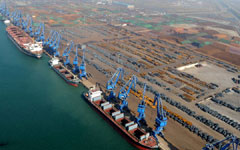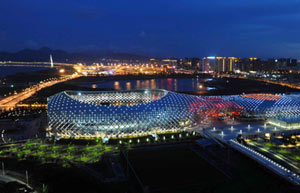At present, water expenditure of an average Chinese household is about 0.5 percent of disposable income. This is one of the lowest in the world. The average water price for 25 major Chinese cities is only $0.46 per cubic meter, compared to a global average of $2.03 per cubic meter.
Last November, China's leaders discussed the country's high rates of resources use, including water, and promised the market would play a greater role in setting prices and sector reforms. Accordingly, by 2015, there will be a three-tiered pricing structure in all cities and towns based on actual water use. The top 5 percent of water users will pay three times the base price. The next 15 percent will pay 1.5 times the base price. However, 80 percent will continue to pay the same cheap price.
|
 |
 |
However, increasing the price of water without improving services is not a feasible option, because the public will not accept it. Within the next five to 10 years, the objective should be to ensure all cities with a population above a certain level, for instance above 200,000 people, receive clean water which can be drunk safely from the tap.
Concurrently, public awareness campaigns, such as those in Singapore, that focus on the importance, value and security of water for people's quality of life and the country's continuous economic development should be considered. People should be made aware that the cost of poor water supply and wastewater treatment is probably now around 2.5 to 3.0 percent of the country's GDP.
With cheap pricing, as has been the case historically, there can only be limited water conservation. This has also stopped companies, public or private, from carrying out badly needed upgrades, and proper and regular maintenance of their systems, and enabled them to delay applying the latest and best practices and technology to improve water governance and management.
China is a vast and heterogeneous country. There is no single silver bullet that will improve domestic water supply throughout the country. However, proper water pricing is one of the most important tools available to ensure every Chinese has access to safe water in the foreseeable future. Like any tool, water pricing has to be used sensitively and properly.
Cecilia Tortajada is the President and co-founder of the Third World Centre for Water Management, Mexico. Asit K. Biswas is the Distinguished Visiting Professor of the Lee Kuan Yew School of Public Policy, and co-founder of the Third World Centre for Water Management. One of their recent books is Singapore Water Story (Routledge, 2013), which is now being translated into Chinese and Japanese.
|
 China's top 10 richest cities |
 Top 10 overseas travel destinations |
